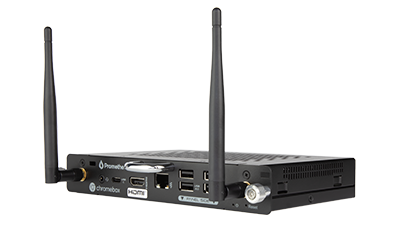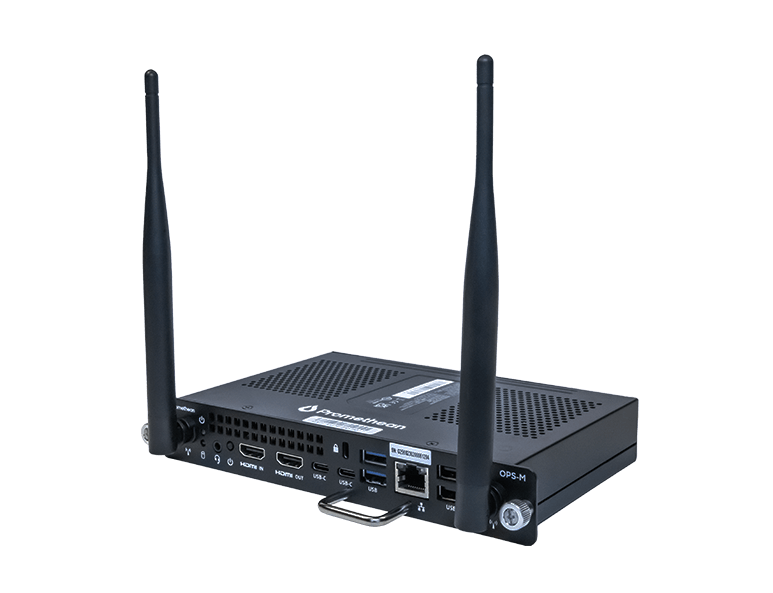Published on November 12th, 2021
Accelerating K-12 learning recovery
14 minute read

The second blog in our series exploring learning loss
As highlighted in our last learning loss blog post, research shows that on average, K-12 students lost up to four months of mathematics and an additional four months of reading in the last school year. With the 2021/22 school year underway, K-12 educators are focused on making up for ground lost during the COVID-19 pandemic.
Determining how to address learning loss can be challenging, but with a targeted approach to identifying skills gaps, the right remediation strategies, and access to new federal funding, K-12 schools have a critical opportunity to get students back on track.
Identify Skills Gaps
As schools look to get a clearer picture of the learning loss that occurred over the course of the pandemic, it can be tempting to turn to broad assessment tests focused on comprehension of the previous school year’s content. But these formal assessments may be too wide-ranging to accurately pinpoint the specific areas where remediation is needed and can risk further alienating students.
Still, gathering data is an essential part of the learning recovery process. Formative assessment promises to provide teachers with more targeted, actionable insights while keeping students engaged. Experts recommend that teachers prioritize this strategy as the first step to assessing learning loss.
Quick quizzes and questionnaires administered in the moment of learning can help teachers measure comprehension levels in real-time. Tools like Promethean’s ClassFlow polling feature allow teachers to conduct these formative assessments quickly and easily. Through ClassFlow, teachers can choose from eight poll types including multiple choice, true/false, and open ended written or drawn response polls to gather student comprehension data and narrow in on areas where additional support may be needed. Teachers can also empower students to take ownership over their own learning recovery with ongoing self-assessments.
In addition to these assessments, schools will also benefit from connecting students’ current teachers to their teachers from the previous year so that they can exchange insights. A student’s previous teacher may have a valuable perspective on that student’s strengths and the areas that they were most challenged by last year. Candid conversations between teachers can help to more quickly identify a student’s unique skills gaps, expediting the learning recovery process.
As the 2021/22 school year unfolds, continue to check student progress against your curriculum’s grade related benchmarks as available. Keep an eye on how test results compare to pre-pandemic years. And as you go, bear in mind that all student data should be viewed holistically and understood in context. While identifying skills gaps, take note of social emotional learning (SEL) observations, attendance data, and assignment completion rates in addition to academic data.
Focus on the Fundamentals
The prospect of revisiting each and every lesson that students may have missed during the 2020/21 school year is daunting—and impractical. Instead, educators must determine which lessons are absolutely essential, but performing this academic triage is no easy task either.
The key is to prioritize the knowledge and skills that are prerequisites for future learning. Students must first master the mathematical order of operations before they can take on algebra, for example. Start by evaluating lesson materials against the courses students are preparing to take in the coming year. What competencies are fundamental to students’ future academic success? How can you align lessons to meet those needs? By identifying which learnings are foundational, teachers can streamline the learning recovery process and develop a plan that maps directly to students’ long-term success.
Get Personal
Learning loss can vary significantly from student to student, so is best addressed on a small group or individual basis. Personalized learning tailors students’ learning experiences to their individual needs. This differentiated instruction customizes learning to complement a student’s strengths and abilities. A personalized approach to learning recovery allows educators to meet each student where they are and to accelerate the process of addressing learning loss by narrowing in on a student’s unique areas of need.
Consider integrating the following personalized strategies into your learning recovery plan:
- Segment students into groups based on ability: Consider organizing these student groups by specific skill needs, rather than overarching subject competency. This will refocus instruction on skill building and unlock more opportunities for targeted education.
- Create a learning recovery playlist: A common tool in the personalized learning arsenal, learning playlists are a series of activities or resources that students can move through at their own pace. A playlist may be a collection of short instructional videos, or a set of printed exercises. Learning recovery playlists can be adjusted to address individual students’ skills gaps. Playlists allow for a more personalized learning experience, giving students the freedom to move through materials in the order of their choosing, at a pace that feels comfortable to them. Playlists empower students to be self-directed learners, requiring less real-time logistical guidance from teachers. This frees up valuable teacher time that can then be put towards personalized 1:1 student support.
- Employ project based learning (PBL): Give students the opportunity to complete a project in the format of their choosing, whether it’s a comic book, a stop motion video, or presenting a live “news report.” This student-centered approach allows learners to engage with course materials on their own terms. PBL requires students to exercise multiple cross-disciplinary skillsets, helping teachers mitigate several learning loss areas at once. PBL also gives students the opportunity to learn from each other, which can support social-emotional development and unlock new levels of comprehension. This may also free up additional teacher time for 1:1 guidance.
For more personalized learning ideas, explore The Future of Personalized Learning
Improve Outcomes with Edtech Upgrades
Available federal funding means that districts now have access to the resources they need to adopt game-changing classroom technologies. A significant percentage of funding is earmarked for “evidence-based interventions” to address learning loss; now is the time for K-12 schools to upgrade to edtech solutions that directly impact learning recovery. It’s no surprise that Promethean’s State of Technology in Education Report found that technology is a strategic priority for 72% of schools amongst the largest consensus of educators.
With the proliferation of various modes of learning, it’s important that district leaders seek out research-based tools that are flexible enough to securely support teachers and students during in-person, hybrid, and remote learning models. While exploring edtech solutions, districts should also consider the professional development and teacher tech training opportunities offered by providers. Look for an edtech partner that offers a full-service, comprehensive solution. Promethean offers award-winning interactive displays, lesson delivery software, and expert professional development all designed to increase teacher efficacy, boost student engagement, and improve academic outcomes to ensure students thrive.
Promethean solutions help schools address learning loss across core areas of the three economic stimulus Acts that established the U.S. Education Stabilization Fund.
- Professional Development: Promethean offers connected professional learning communities to help educators make the most of EdTech in the classroom.
- Education Technology: Promethean technology is designed to support the continuity of learning.
- Improve Achievement: With Promethean, teachers have access to a wide variety of activities, support, and embedded assessments to address the impact of COVID-19 related learning loss.
- Personalization: Promethean offers a suite of customizable digital tools educators can use to address the unique needs of historically underserved student populations.
- Digital Access: Promethean offers turnkey digital learning solutions to help schools expand online learning to all students no matter where they are.
With screen share capabilities, interactive tools, blended learning resources, data analysis and much more, Promethean EdTech equips schools with everything they need to make the most of their federal relief funding. And because student privacy is essential, Promethean’s Classflow is Family Educational Rights and Privacy Act (FERPA), Children’s Online Privacy Protection Act (COPPA), and California Student Privacy Certified (CSPC) certified.
For more information, explore Promethean’s new guide, Addressing Learning Loss with the Support of Technology and the State of Technology in Education Report.
All Hands on Deck
Invite parents and guardians into the learning recovery process with regular updates on the week’s lesson materials. Research shows that families and caregivers often want to be involved, and that when they are, student motivation and academic scores increase.
Providing ongoing insight into what lessons were covered in a week has the potential to catalyze family engagement and open a dialogue around a child’s individual learning gaps as they’re revealed, giving the teacher more opportunities to address those trouble areas in real-time. This also helps teachers tap into parents as an at-home resource; it’s a lot easier for parents to join the remediation effort if they’re kept in the loop about what’s going on in the classroom. Updates can come in the form of a weekly email newsletter, blog post on a classroom blog, or via an online parent portal or app. Building family-school partnerships further establishes parents as partners in their child’s education to everyone’s benefit.
Tutors are also poised to be vital allies in the learning recovery effort. New research indicates that school districts plan to invest heavily in tutoring support for students working to make up for lost academic ground with districts expected to spend $750 on tutoring per one in three students within the next year, totalling $12,75 billion nationwide. Teachers will have an opportunity to have open lines of communication with tutors, exchanging insights on areas where individual learners require the most support.
Take a Holistic Approach
Above all else, it’s imperative that learning recovery address the whole child. The learning loss mitigation strategies covered here are most effective when paired with SEL initiatives that ensure that students are receiving the support they need to thrive. Promethean’s State of Technology in Education Report reveals that improving SEL is schools’ top priority for the 2021/22 academic year, according to the largest proportion of educators. “There must be more of an emphasis on social/emotional wellbeing and less focus on test results,” notes one of the educators surveyed. Look for opportunities to integrate SEL and culturally responsive pedagogical practices throughout your learning recovery plan.
Similarly, educators should also be equipped with the resources they need to succeed. Effective learning loss remediation requires a great deal of teaching expertise. Make sure teachers are set up for success with adequate professional development opportunities. Access to training sessions, learning recovery resources, and technology support is essential. With a multi-pronged approach to learning recovery and the right partners in place, K-12 schools have the power to meaningfully remediate learning loss and propel students forward into a successful school year.
Read the first blog in the series: Understanding Learning Loss















